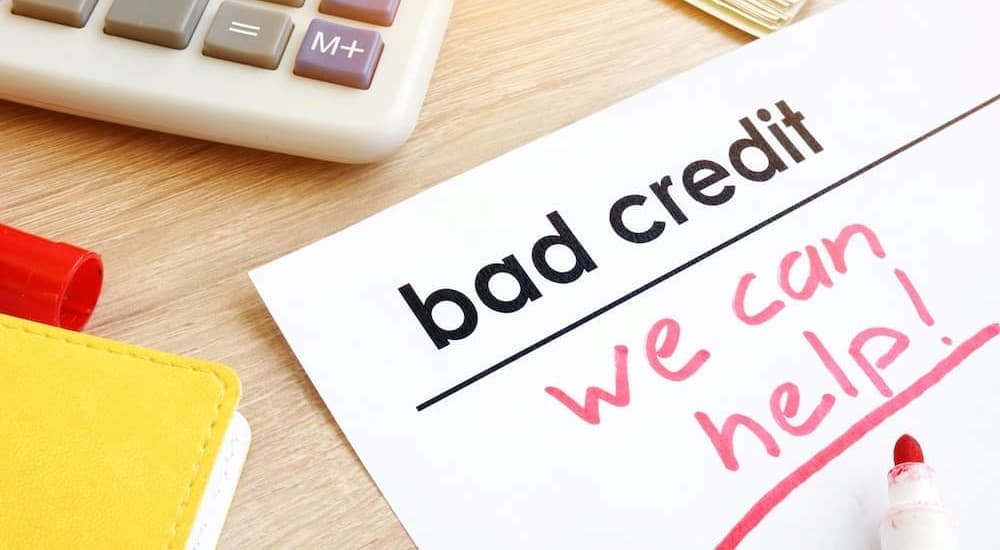A few numbers follow you through your life, from your Social Security number to your driver’s license number and credit score. That three-digit number is especially important, gaining more significance as you enter adulthood. Your credit score reflects your creditworthiness, whether you are buying a home, securing a credit card, or qualifying for a bad credit auto loan.
Your credit score carries a lot of weight in your financial future, but what makes it so significant? How did the widespread adoption of credit scores as a standard tool to determine one’s creditworthiness come to be? As it turns out, the credit score, or at least the concept, isn’t a modern invention.

The Rise of Consumerism Yields the Rise of Credit
America in the early 1900s was burgeoning with new ideas, with automotive pioneers like Henry Ford not only introducing automobiles like the Model T, but also transforming how Americans worked. Ford streamlined production with the moving assembly line and introduced the five-day work week that rewarded employees with time off for their loyalty and labor. Businesses followed suit, and mass production blossomed nationwide as Americans finally earned more money, meaning they had more to spend beyond the necessities of food and shelter.
As Ford and other industrial pioneers paved the way, the American landscape shifted to consumerism. The influx of available goods meant Americans were ready to spend, which spawned the growing need for financing or credit. Businesses responded in kind, extending personal loans, installment plans, and in-store credit to customers without a second thought. While it seems incomprehensible today, these businesses operated locally–think of a local mercantile–and knew every customer that walked in the door, what they did for a living, and the names of their family members. It was a financial loan or “line of credit” based on familiarity and established integrity.
Exponential Growth Highlights a Vital Need: The First Credit Bureau
As consumerism took hold and major towns saw an influx of new people, jobs, and goods, it was apparent that financial lending based on personal relationships and reputations was no longer adequate. Moreover, the system wasn’t standardized or quantitative, but entirely subjective. Fortunately, a solution was already in place.
The Retail Credit Company (RCC) opened its doors in Atlanta, Georgia, in 1899 to gather consumer information and provide it to businesses, financial institutions, and other lenders willing to pay for the reports. This marked the first time a company set out to standardize the consumer credit process. But even then, the process was time-consuming. With only one office, RCC hired correspondents to gather necessary consumer data. First working with the leading insurance companies in America, RCC soon expanded and added dozens of offices nationwide, proving its effectiveness in other industries.
RCC established a stellar reputation by building individualized credit reports that businesses, lenders, and other institutions could purchase before approving a line of credit. By the 1940s, RCC averaged 7.5 million reports annually, showing the stronghold of consumerism and laying the groundwork for what would become the nation’s first credit bureau. Today, we know RCC as Equifax, and those 7.5 million annual reports are now at 2.9 billion nationwide.

Standardizing the Credit Score: The Birth of FICO
Whether you’re establishing your credit history with your first credit card, or rebuilding your credit with a bad credit auto loan, you know your credit score plays a prominent role in the process. However, the reliance on credit scores didn’t become standard until the late 1980s. Ironically, it took decades for businesses, lenders, financial institutions, and retailers to adopt the system. Why the delay?
Fair, Issac, and Company Is Established
By the 1950s, the growing demand for goods and credit proved consumerism wasn’t going anywhere. It also showcased a critical need for a more objective approach to financial lending. Mathematician Earl Isaac and engineer Bill Fair recognized that need, and set out to design a solution when they established the Fair, Isaac, and Company in 1956. They aimed to establish a method based on data and facts, eliminating the subjectivity long associated with credit reporting.
Fair, Isaac, and Company created an objective credit score, standardizing the credit reporting process and extending their system to American businesses, lenders, and other organizations. While the system was meant to benefit consumers because of its objectivity, it also gave banks and financial institutions another critical opportunity to confidently expand their customer base. Unfortunately, only one business, American Investments, was willing to adopt the system, doing so in 1958 and creating a tidal wave that would forever transform the American landscape.
“Early on, the FICO Score was designed to democratize credit, empowering lenders of all sizes, not just the big players, to appropriately measure risk and offer credit to a wider number of consumers,” FICO Vice President of Scores Sally Taylor said in a 2019 interview. “The FICO score took human judgment and biases out of the system. And from a regulatory perspective, lenders knew that using the FICO Score was a way to ensure prohibited biases were not considered in their credit decisions.
Despite having only one client, Fair and Isaac believed in their system and refused to give up. That persistence paid off, and other companies reached out to Fair, Isaac, and Company for their objective system. Before long, the company was renowned for its efficient and dependable credit reporting, laying the foundation for the company known today as FICO.
The FICO Score Becomes Standard
As Fair, Isaac, and Company gained traction, the company worked to have a broader impact, and established the FICO Score in 1989 as a universal tool that could effectively and accurately calculate risk. The company was so confident in the tool that it picked over two dozen of the top lenders in the country and challenged them to test it. “We asked them to test the FICO Score on their portfolios using retrospective analysis to see what improvements could have been made using our score instead,” Taylor said. FICO offered to pay for the test if they lost, but within 12 months, every lender sang the company’s praises. By 1991, Equifax, TransUnion, and Experian adopted the FICO Score, prompting the system’s implementation worldwide.
The Science Behind Your Credit Score
The credit score isn’t a modern idea, but its standardization and objectivity are. A century ago, your credit score was based on your reputation and relationships. For example, you’re good friends with the owner of the local general store, so it’s nothing to get the material your wife needs for the kids’ winter clothes and pay for it later. Perhaps your brother runs the local feed store, so paying for the necessities to keep your farm running isn’t a big deal because you can pay in installments. It wasn’t simply about who you knew, but about the pride of maintaining your integrity and holding true to your word to repay your debt.
The critical difference is that Americans weren’t established consumers. Sure, they purchased items, but they were primarily necessities, like food, fabric, and feed. Things beyond their “normal” were considered frivolous. That changed with the rise of the automobile and the influx of goods that followed. Before long, America’s agricultural-based economy was overshadowed by industries, which introduced Americans to the idea of buying more than the necessities.
This evolution came with growing pains, revealing the insufficiencies of the subjective and reputation-based credit reporting system most businesses used. Having a relationship with everyone and knowing their financial statuses was impossible as populations rose. Moreover, it was incredibly risky and limited many businesses from taking calculated risks.
Credit reporting and the standardization of tools like the FICO Score remedied those issues, but they have also done something else remarkable. They make loans more accessible to individuals across the entire spectrum of fair to excellent credit. Without these tools, banks couldn’t confidently extend loans to consumers with lower credit scores. Thanks to unbiased and standardized credit reporting, the playing field is leveled, allowing more consumers to make larger purchases by qualifying for bad credit auto loans, getting approved for a home loan, or securing a line of credit.





